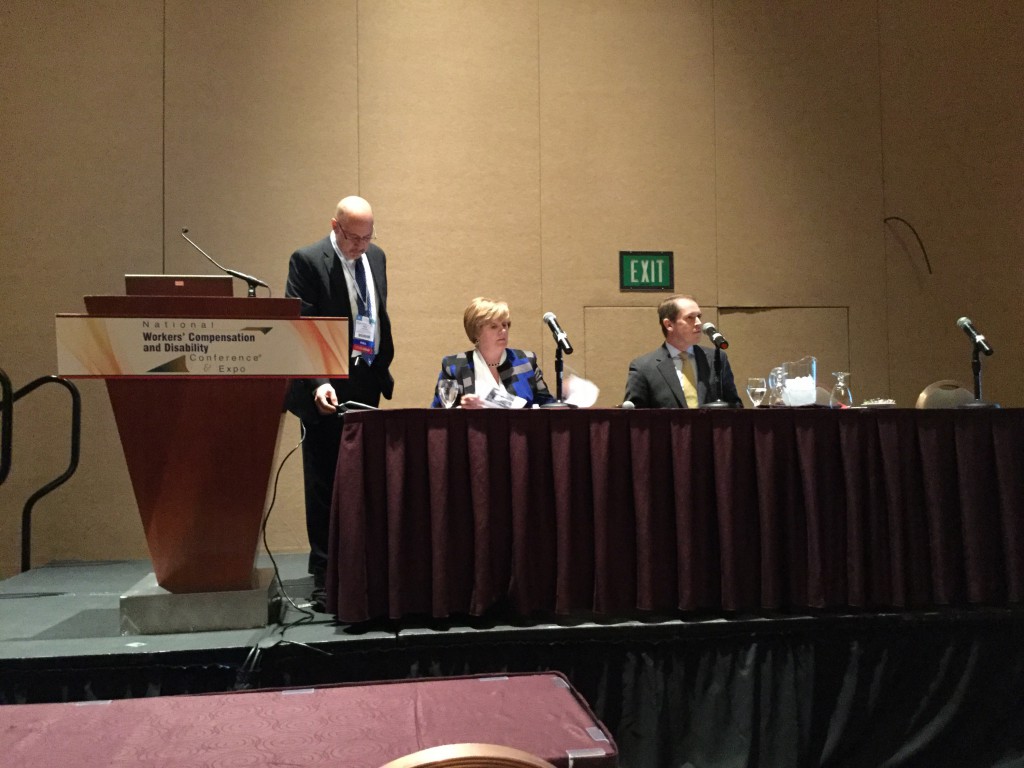Extreme Violence in the Workplace
During this session at the 2015 National Workers’ Compensation & Disability Conference Albert B. Randall Jr., President, Franklin and Prokopik, and Lori A. Serverson, CSP, Vice President, Lockton Companies discussed workplace violence.
“Run, Hide and Fight” is the new motto being taught in schools not “Stop, Drop and Roll.”
There are nearly 2 million employees reports of workplace violence each year. The United States is the leader of mass shootings.
Violence on the job risks include:
- working alone
- interacting with public
- handling money
- delivery
- late or early hours
- guarding
- care
- teaching
- high crime areas
The costs associated with workplace violence is about $3 – $5 billion annually. This does not include costs associated with publicity after the event. There are several different definitions of workplace violence from disruptive behavior, obstruction vertically and horizontally as well as physical violence. Violence normally starts with disruptive behavior and escalates to physical violence.
There was an active shooter study conducted and the findings included 160 incidents between 200 and 2013. This means an average of 11.4% incidents each year. 96% of active shooters are male. Active shooters main intention is to kill! These violent acts are random to specific, and can be highly predictable based on prior behavior. Some red flags to look for are someone who encompasses these traits: violence fascinations, violence solutions, personal problems, blamer, loner, overreaction and who access to weapons. The people you are sitting around during an act of violence will be your first responders not the professionals.
The Safety Perspective:
“He who fails to plan, plans to fail” It’s important to prepare for workplace violence events.
1. Create and emergency action plan that includes:
- evacuation policy and procedure
- contact information
- information of local providers
- emergency notification system
2. Prepare/conduct training exercises that include:
- situational awareness
- calling 911
- survival training
Crisis response prevention programs include professionals and emergency management. If a violent act happens at work employees should run if possible. They should exit the building if they are able to with their hands up to let the police know they are not the shooter and they are not hiding anything. Employees should follow the instructions of the police. If you are not able to leave the building, find a hideout that will provide you protection and not trap you. If you are not able to hide, you will need to fight. You need to be aggressive and fully commit to fighting in this situation.
Closing Remarks:
- top leadership overtly communicating a zero tolerance for violence
- professional assessments – work environment inside and outside
- teach employees the at risk behaviors and conduct interventions
- strong and fair HR hiring, screening and clear discipline
- culture of safety to manage with empathy and professional support
- psychological first aid – immediate briefings, effective interventions and counseling
- crisis response experts and catastrophic field case management support
- prompt and thorough investigation of utmost importance
- evidence preservation policy needed to avoid spoliation concerns
- employ team approach to handling litigation – Safety, Risk, Claims and Legal personnel must be cohesive unit


